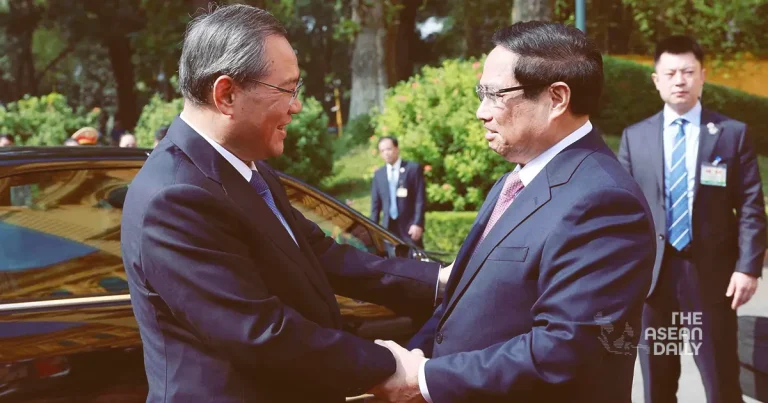13-10-2024 (HANOI) Vietnam and China have inked ten crucial agreements, focusing on expanding cross-border infrastructure, economic cooperation, and digital payment systems. The accords were signed following high-level talks between Vietnamese Prime Minister Pham Minh Chinh and visiting Chinese Premier Li Qiang on Sunday.
A key highlight of the agreements is the commitment to develop a technical plan for a railway link connecting Lao Cai in northern Vietnam with Hekou in China’s Yunnan province. This initiative aims to enhance connectivity and facilitate trade between the two nations.
In the realm of digital finance, both countries have agreed to a memorandum of understanding (MoU) for implementing cross-border payment services using QR codes. This move is expected to streamline transactions and boost economic ties in the increasingly digital landscape.
Further strengthening economic bonds, the two sides have agreed to study the feasibility of an “economic cooperation zone” along their shared border. This proposal could potentially create a thriving hub for bilateral trade and investment.
While China remains Vietnam’s largest trading partner, the relationship between the two countries is not without its complexities. Historical tensions persist, particularly regarding territorial disputes in the South China Sea, a critical waterway that facilitates trillions of dollars in global trade annually.
Despite these underlying issues, both nations have expressed a willingness to enhance cooperation across various sectors. In a meeting on Saturday between Vietnam’s top leader To Lam and Premier Li Qiang, agreements were reached to boost defence and economic collaboration.
The Nhan Dan newspaper reported that the leaders committed to “maintain regular high-level exchanges and cooperation in defence, security, and foreign affairs … expanding the implementation of new mechanisms”. Vietnam has pledged to create a more conducive environment for high-tech Chinese investments, while China has promised to improve market access for Vietnamese agricultural products.
However, recent flare-ups in the South China Sea have cast a shadow over the diplomatic progress. Vietnam lodged a protest last week against what it described as a “brutal” attack by Chinese vessels on Vietnamese fishermen in disputed waters. The incident underscores the delicate balance both nations must maintain as they navigate their complex relationship.
During Saturday’s meeting, Vietnamese leader Lam emphasised the need for both parties to “better manage and resolve differences” in maritime issues, highlighting the ongoing challenge of reconciling economic cooperation with territorial disputes.
The recent diplomatic engagements come in the wake of leadership changes in Vietnam. To Lam assumed office as general secretary in early August, following the passing of his predecessor, Nguyen Phu Trong. In a symbolic gesture of the importance placed on Sino-Vietnamese relations, Lam’s first overseas trip as leader was to Beijing, where he met with Chinese President Xi Jinping.




